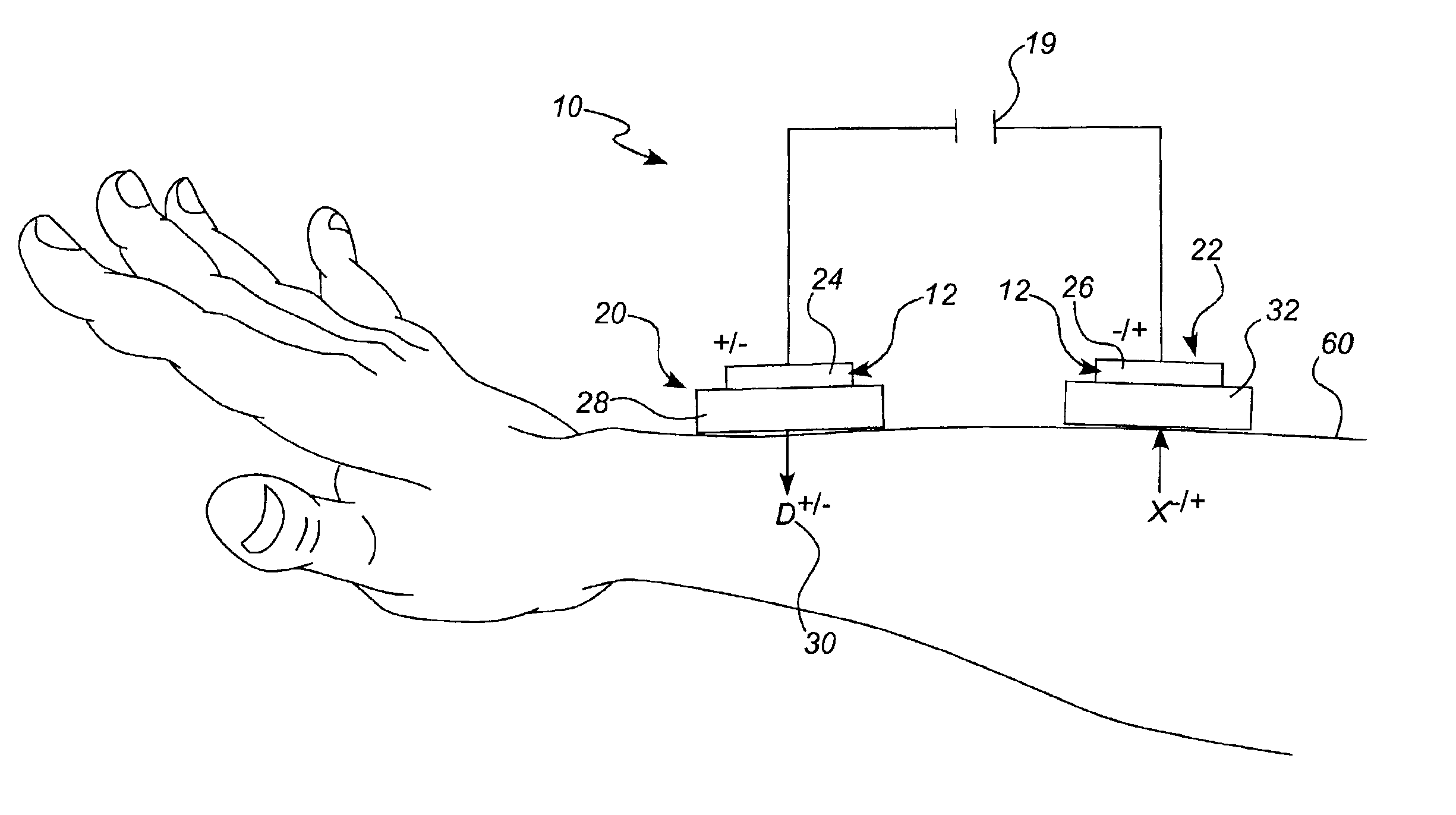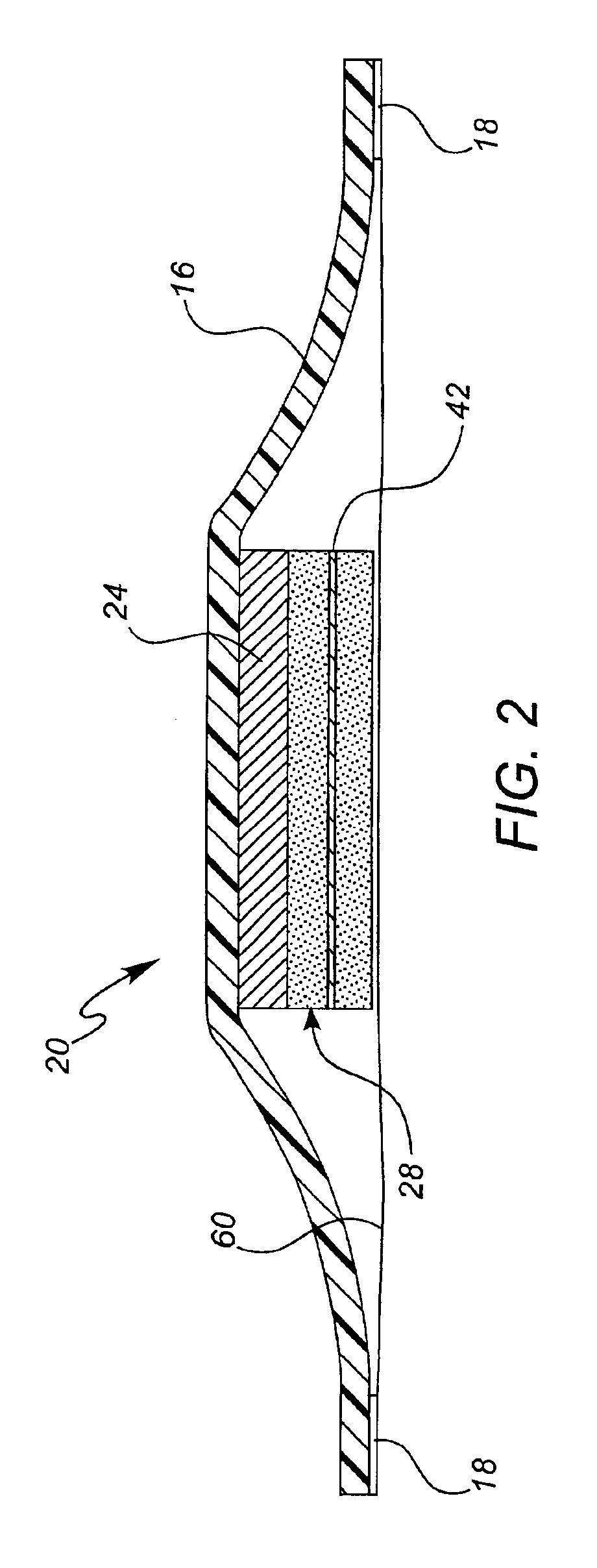Iontophoretic drug delivery device and reservoir and method of making same
- Summary
- Abstract
- Description
- Claims
- Application Information
AI Technical Summary
Benefits of technology
Problems solved by technology
Method used
Image
Examples
example 1
Mass perActiveConcentration2.5 cmsqComponentsInert Components(%, w / w)(mg)Lidocaine10.0045.000hydrochloride,U.S.P.Epinephrine0.100.450BitartrateGlycerin, U.S.P.10.0045.000Cross linked polyvinyl16.6775.020pyrrolidone (PVP), U.S.P.Sodium metabisulphite,0.050.230U.S.P.EDTA disodium, U.S.P.0.010.045Citric acid, U.S.P.0.020.090Water63.15450Total100.00450.000
In the preferred embodiment, the Lidocaine is an anesthetic, the Epinephrine Bitartrate (“Epinephrine”) is a vasoconstrictor, and the composition of PVP is 10% to 20%, preferably 15%, known as K-90F from BASF Corp. However, it should be appreciated that the concentration of the PVP may vary from approximately 10% to 60% w / w. In addition, it should be appreciated that L-Adrenaline can be substituted for the Epinephrine.
After cross-linking the gel material of Example 1 having 25% PVP, 75% water and 1% preservative PHENONIP manufactured NIPA Corporation by exposure to 2 Mrad (20 kGy) and loaded with drug and excipients, it was found that ...
example 2
Same as Example 1, however, Polyethylene oxide (PEO) NF was substituted for the PVP with the unloaded reservoir polymer concentration being around 1% to 6%, preferably 5.0%, however, it should be appreciated that the concentration of the PEO may varying from approximately 1-10% w / w depending upon its molecular weight.
Further, material remaining on the electrode is preferred as evidencing intimate contact between the electrode and the reservoir.
example 3
Same as Example 1, with polyvinyl alcohol (PVA) being substituted for the PVP, and the preferred unloaded reservoir polymer concentration of the PVA varying from approximately 10-30% w / w.
PUM
 Login to View More
Login to View More Abstract
Description
Claims
Application Information
 Login to View More
Login to View More - R&D
- Intellectual Property
- Life Sciences
- Materials
- Tech Scout
- Unparalleled Data Quality
- Higher Quality Content
- 60% Fewer Hallucinations
Browse by: Latest US Patents, China's latest patents, Technical Efficacy Thesaurus, Application Domain, Technology Topic, Popular Technical Reports.
© 2025 PatSnap. All rights reserved.Legal|Privacy policy|Modern Slavery Act Transparency Statement|Sitemap|About US| Contact US: help@patsnap.com



